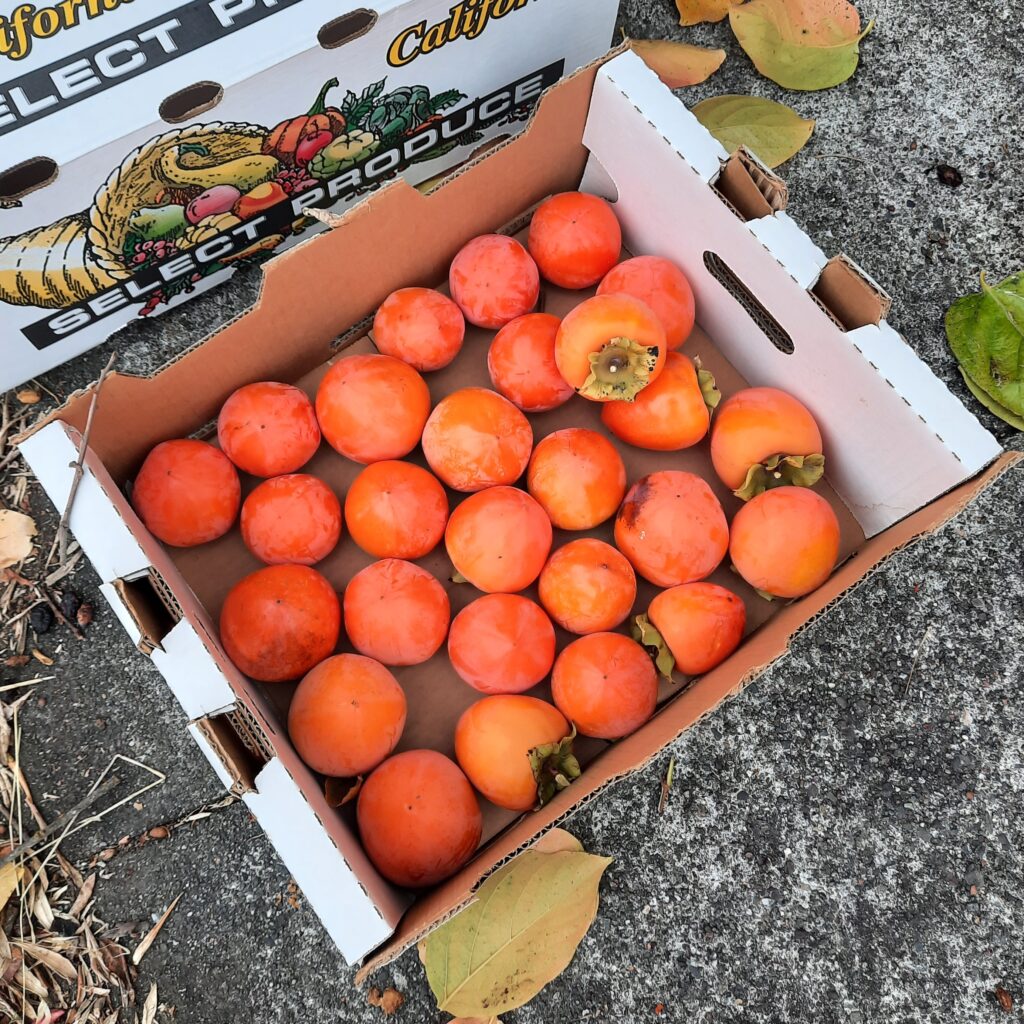
One of my favorite things about the month of November is a beautiful, sweet, orange-colored fruit called the persimmon. Truth be told, I was not aware of the existence of the persimmon until I moved to the west coast in the late 90s. I quickly learned that there are several different types of persimmons, one of which needs to be soft and almost to the point of liquefying to be consumed without having a mouth-puckering astringent taste, which I learned this the hard way, namely the Hachiya persimmon. For me, patience is definitely crucial for successful consumption of this type of persimmon, which involves patiently waiting for full ripeness.
Two other types of persimmons that I have enjoyed are Fuyu and Amagaki, both of which I eat while they are still hard, with very little to no astringency, depending on the degree of ripeness. These three types of persimmons grow here in northern California and are relatively easy to find in local stores and farmers markets during the months of November and December.
Of course, since I love to know the nutrient content of foods, I did a nutrient analysis of persimmons. The type of persimmon used to determine this information was not specified:
Persimmon, 3 fruits (75 g)
Calories 95
Calcium 20.3 mg
Iron 1.87 mg
Potassium 232.5 mg
Vitamin C 49.5 mg
Protein 0.6 g
I was surprised to see the notable iron, vitamin C, and potassium content of persimmons. For a fruit, I find this to be worthy of consideration.
Additionally, would you like to receive our eBook "Our Top 12 Strategies for Long Term Success on A Raw Plant-Based Diet"? Just fill out the email form in the right column of this website and you’ll receive it for free!
